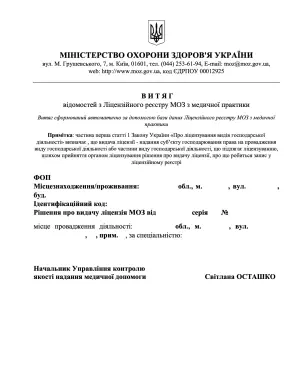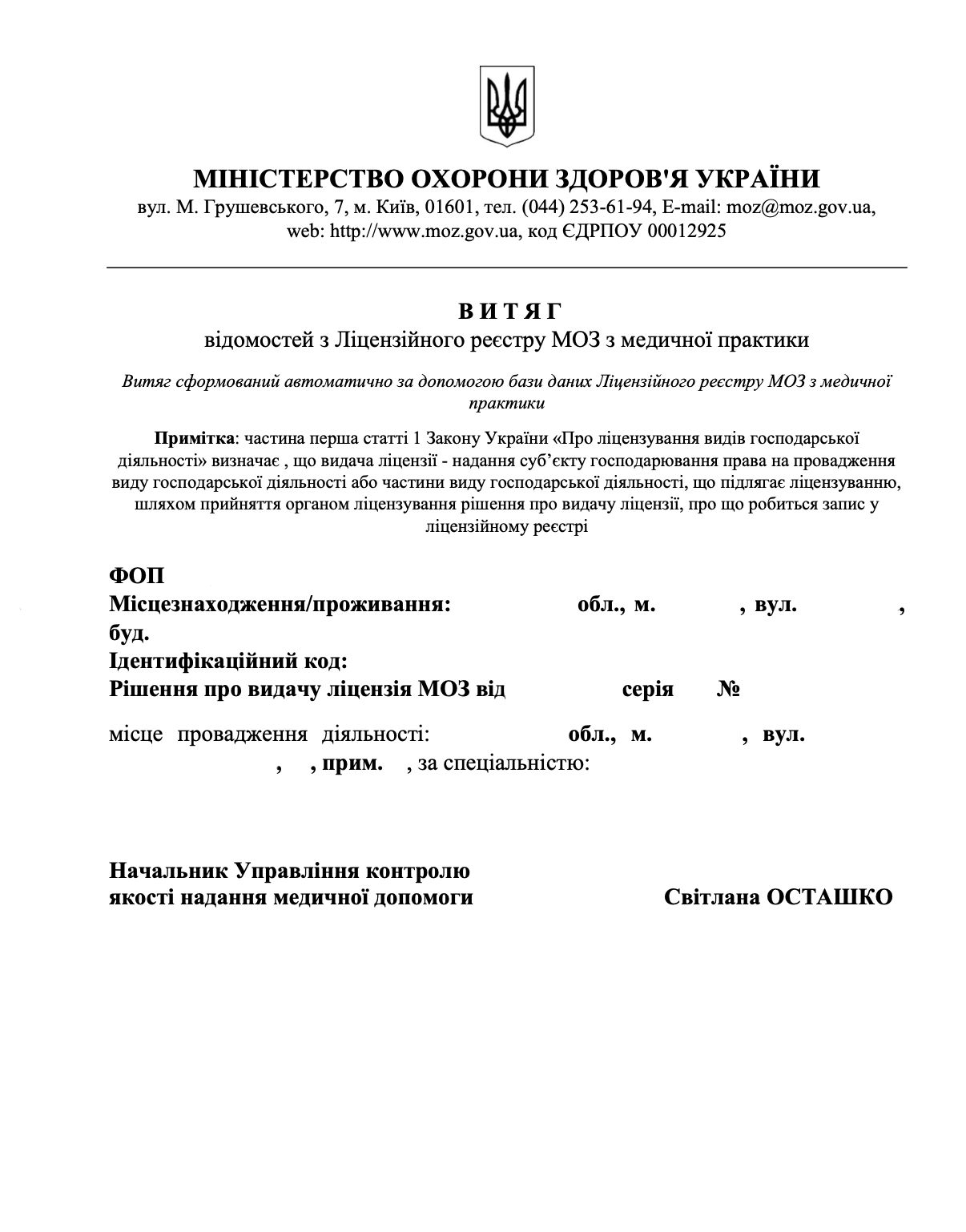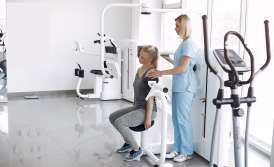What are the requirements for the equipment of X-ray room?
Cost of services:
Reviews of our Clients
…we can confidently recommend the lawyers of Law firm «Pravova dopomoga» as reliable legal partners on the matters of medical practice licensing and other procedures related to the Ministry of Health of Ukraine.
... Having used the services of the Law Firm "Pravova dopomoga", we managed to solve our problems, as well as found a qualified and reliable partner.
Our firm provides licensing services for diagnostic centers and dental clinics' medical practices. A frequent issue we encounter when acquiring licenses for these facilities involves queries about the proper setup and equipment for radiology (X-ray) departments.
Clients often ask us the following questions:
- What specific equipment is required in an X-ray room?
- What are the spatial and other design standards for an X-ray room?
- Under which legal statutes are the equipment requirements for X-ray rooms regulated?
In this guide, we aim to address these inquiries and elaborate on the criteria for positioning, equipping, and obtaining the necessary licenses for radiology departments.
Our expertise is not limited to radiology and MRI. We also handle modifications for hospitals with more than 300 medical staff, telemedicine, metrology, accreditation, modifications in existing licenses, and even strategizing for medical business ventures. This is just a brief overview of the range of tasks we manage.
Boasting over 15 years of experience in the Ukrainian medical sector, we have successfully secured over 80 licenses in the past three years alone. Collaborating with us is an insightful experience, as we possess all the necessary answers and strategies, even when your initial documents are not perfect.
You may also like: Is an X-Ray Room Permitted in a Residential Building?
How to Arrange X-Ray Facilities?
X-ray facilities must not be situated in residential buildings or child-centric institutions. An exception exists for X-ray cabinets with dental X-ray devices operating at U 60-90mV and I 7-10mA, which applies to dental clinics.
Therefore, setting up X-ray rooms is permissible in polyclinics that are part of residential buildings, on the condition that adjacent rooms, both above and beside, are not used for residential purposes. It's practical to locate radiology departments within a complex that includes both a hospital and a clinic.
Separately, X-ray facilities for tuberculosis, infectious diseases, and maternity wards in hospitals should be independently situated.
Dental clinics equipped with dental X-ray machines are allowed in residential and public buildings, provided they comply with legislative norms.
Please note! It is not permissible to establish radiology departments under shower areas, toilets, or swimming pools.
The size and configuration of a radiology department vary depending on the type and specifics of the procedures performed. The space of the procedural room should be adjusted in line with officially approved design plans.
You may also like: Requirements for Equipping Doctors' Offices for Licensing Purpose
X-Ray Room Structure Based on Examination Types:
1. X-Ray Diagnostic Room for General Examinations:
- Procedure room – requires a minimum of 12 sq.m.
- Control room (console room) – at least 10 sq.m.
- Doctor's office – should be at least 10 sq.m.
The following additional spaces are determined by medical needs and specified as necessary.
- Barium preparation booth – a minimum of 4 sq.m.
- Photographic laboratory – starting from 10 sq.m.
- Xeroradiography lab – at least 10 sq.m.
2. X-Ray Fluorography Room:
- Procedure room – should cover at least 12 sq.m.
- Changing area (for group examinations) – minimum of 15 sq.m.
- Waiting zone (for group examinations) – at least 15 sq.m.
- Photographic laboratory – not less than 6 sq.m.
3. According to the New State Building Standards (DBN) V.2.2-10:2022, the requirements for such spaces have been significantly revised. Key requirements include:
- Radiography suite – no less than 38 sq.m.
- Procedure room for medical interventions under magnetic resonance imaging guidance (MRI suite) – at least 47 sq.m.
- Procedure room for interventions under computed tomography guidance (CT suite) – at least 45 sq.m.
- Procedure room for interventions under positron emission tomography guidance (PET suite) – no less than 50 sq.m.
- Procedure room for interventions under single-photon emission computed tomography guidance (SPECT suite) – at least 50 sq.m.
- Linear accelerator room – a minimum of 128 sq.m.
- Mammography room – at least 16 sq.m.
- Dental radiography room – no less than 14 sq.m. for new buildings and 10 sq.m. for renovated ones.
Please note! The structure and size of a particular x-ray room can vary depending on the type of examination.
What is a Photographic Laboratory in a Dental Office?
A Photographic Laboratory (darkroom) in dental offices is a room within the radiology department, specially set up for the chemical and photographic processing of film-based images (x-rays). Its minimum size is 4 sq.m.
What Are the Essential Safety Requirements for X-Ray Room Equipment?
The safety of personnel in X-ray rooms hinges on several critical factors: the design of the X-ray equipment, the implementation of radiation protection measures, efficient organization of the room, appropriate conditions for conducting examinations, and ongoing radiation monitoring.
The control console for the X-ray machine should be located in a separate control room to ensure safety.
To protect both workers and clients, all X-ray rooms must be equipped with both mobile and individual radiation protection devices, in accordance with the types of X-ray procedures conducted.
Mobile protection devices include:
- Staff screens with viewing windows for full-body protection in a standing position.
- Lower body staff screens for seated protection.
- Patient screens for lower body protection.
- Rotatable screens for targeted protection of specific patient organs.
Individual Protective Gear:
- Protective head caps.
- Protective eyewear.
- Neck collars.
- Aprons (both one-sided and double-sided).
- Dental aprons.
- Protective vests.
- Skirts.
- Radiation shielding gloves.
- Protective plates.
For children, all the aforementioned protective gear is used, along with special items like diapers and swaddling clothes.
Dental X-ray units are permitted only in radiology departments or rooms within general or dental healthcare facilities. In dental offices, a dental X-ray unit can be allocated to only one dental chair.
If a dental office contains multiple chairs, a separate procedural room is necessary for the dental X-ray apparatus. In situations where several machines are present in one room, only one should be operated at any given time.
You may also like: License for Performing Surgical Operations in Dentistry
Who Can Operate an X-Ray Machine?
To operate an X-ray machine, individuals must meet several specific requirements:
- Must be at least 18 years old.
- Possess certification or documentation proving specialized training.
- Have undergone briefing on radiation safety rules.
- Successfully completed a knowledge check on the occupational safety instructions applicable to their workplace.
In certain instances, an additional license for utilizing ionizing radiation sources may be necessary.
This is particularly true for medical institutions that plan to conduct studies with equipment capable of emitting higher doses of radiation. It's important to note that obtaining a sanitary passport is a crucial step in the process of acquiring a license for using ionizing radiation sources. Without this passport, securing the license is not feasible.
When Is the License Not Needed?
According to the Order № 138 dated 03.12.2013, titled "On Approval of the List of Ionizing Radiation Sources, the Use of Which Is Exempt from Licensing," there is a specified list of equipment exempt from licensing.
The significant points of this order include:
- X-ray machines for mammography.
- Dental X-ray machines for targeted, panoramic radiological exams, and cone-beam computed tomography.
- Fluorographic machines.
- Installations and devices with unused X-ray radiation and X-ray structural analyzers.
- X-ray equipment for inspecting baggage at state border crossings, postal offices, law enforcement agencies, etc., except for accelerators.
- Devices for detecting explosives and narcotics.
The complete list of exempt equipment is detailed in the Order.
Correct assembly and arrangement of the equipment, along with compliance with all safety standards, are crucial for obtaining a medical license for an X-ray room.
This is also an essential part of the licensing inspection. Our experts can assist in preparing your facility for licensing and navigating the equipment-related licensing requirements.
If you require a license to establish a radiology room, reach out to us! We offer guidance and support in obtaining the necessary permits to streamline and expedite your business operations.
Need more information?
Learn more about obtaining a Medical License here.





